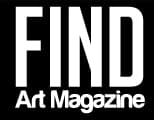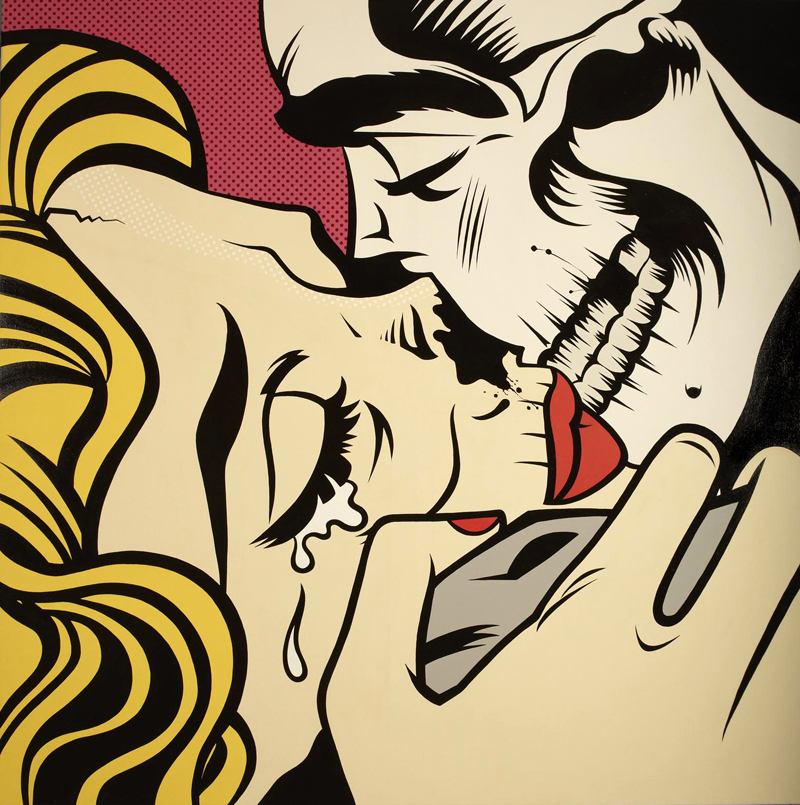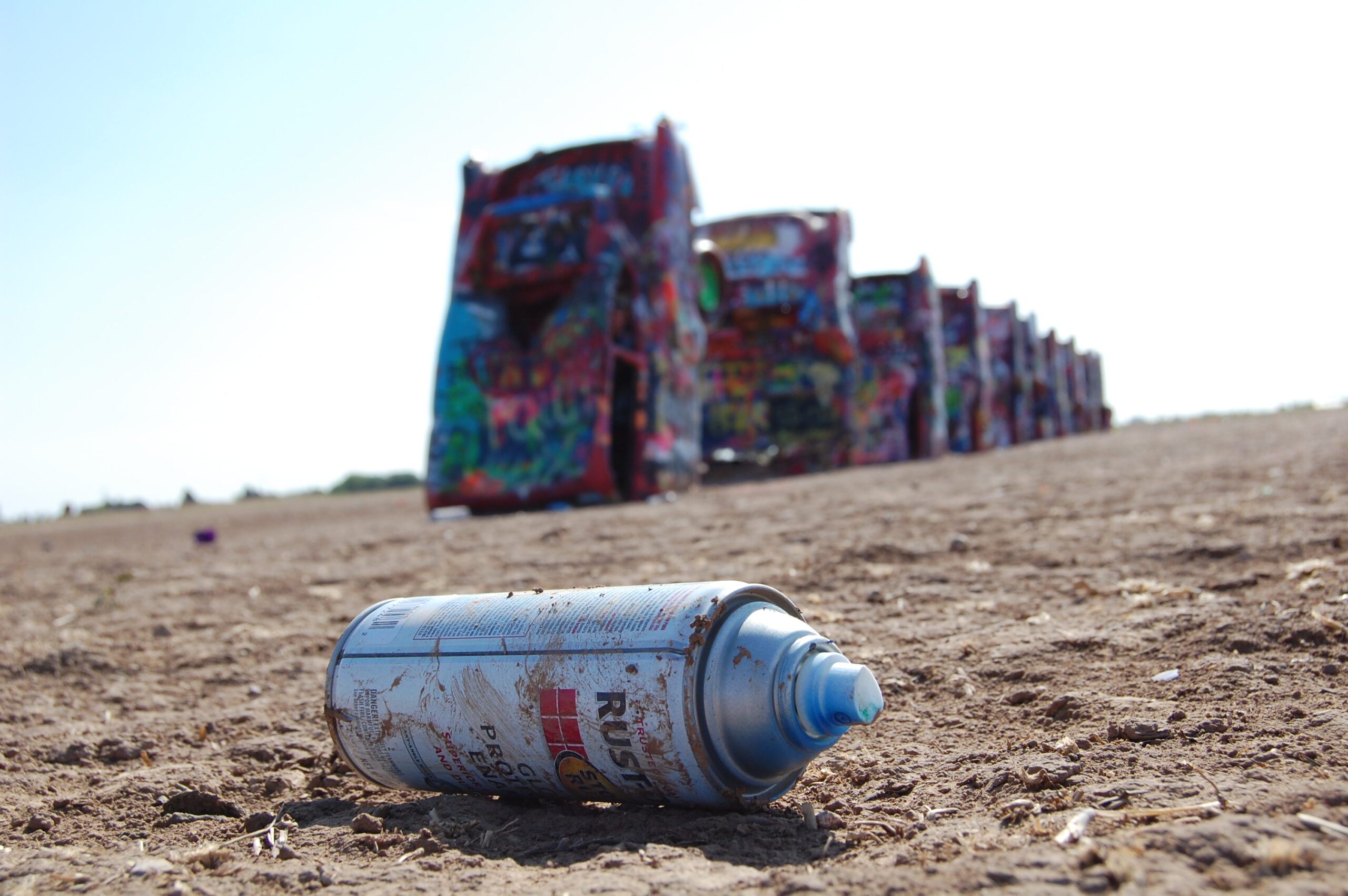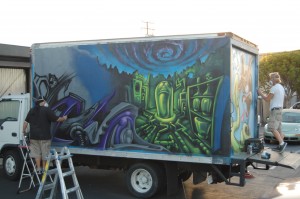FIND Art Magazine recently met up with D*Face on the eve of his opening, “Going Nowhere Fast†at the Corey Helford Gallery in Culver City, CA. We began talking about artists in the scene and soon cut into mass-media, street art in mainstream culture and the role of the artist, matters of taste and style, pushing the creative edge, the power of strong ties to friends and community, and the journey of it all.
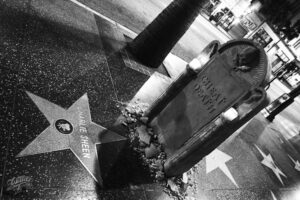
Looking into the street art community and its boundaries, it is a culture founded on the fringes of expression and I perceive the mainstream as a danger to undermining its defining factors.
For me, it’s about getting it out to more people and getting more people to see it. Staying true to what you believe and your integrity. Just last night I dropped a 500lb gravestone on Charlie Sheen’s star on Hollywood Blvd. That’s what I’m talking about. You should be able to do both. It shouldn’t be straddling the line between, “Oh yeah, I only do gallery shows now and that’s what I am, I’m turning my back on these roots.†For me, those things are really the interesting dynamic of it all. Spending four days painting a massive wall because more people will see it rather than in a gallery, that’s the important factor. I’ve been doing it long enough now to where I hope that it will always be pre-eminent.

Are there slight dangers in losing the tenets of the scene, especially if kids come up trying to emulate, dare I say, Banksy?
I think the problem is not how many people see it; it’s where people draw their inspiration from. It’s as much about society in general as it is about the scene. Look at every car, it’s based on the other car that sold really well because they know it’s the public’s idea of what should be accepted; therefore, if Banksy is mainstream popular and everybody loves him, or the perception is everyone loves him, then every kid that’s looking at it that ever wanted to do a stencil, ever wanted to do graphics, or was interested in graffiti, sees somebody getting paid for it, then obviously that’s going to be their point of reference. The problem is when everyone starts looking internally as opposed to looking externally, that’s when the dangers come and you end up with artists being copied.
Are you pushing boundaries in your work where you weren’t before?
If I sell work, I get to invest my money back into what I want to do. I say to people, my wife in particular; “I think I may paint the Queen dead. It’s her 80th birthday, everyone’s thinking, ‘When’s she going to pop the clocks?’†She’s like, “That’s such a bad idea. It’s going to look terrible†Brilliant I’m doing it! That was my gauge, how bad she thought it was going to be is how good it will be. That’s kind of like the shift in my work. When I did the gravestones, to cast them, and put them out, that seemed like a simple operation compared to when I did the Oscars. The goal posts are moving all the time with how ambitious you are going to get with your street installations. For me, I just don’t want to paint walls. I just don’t do stickers. I don’t just want to put posters up. I want to try to get the public’s interaction with that work to be ever shifting. And the best way to disguise it, for people to question it, is advertise. That’s what I do. Because advertising is around you so much, you don’t even notice it. In a way, doing a stencil on a wall or putting a sticker on a lamppost – has become part of our visual understanding of what surrounds us; whereas 10 years ago you put up a wheat paste and people were, “It’s not an advert, what is it, what’s it for?†They had that interaction with it. But now they’re, “Oh, it’s street art.†So then you have to start switching it back up. I will do it in a way you haven’t ever seen it before. It won’t be in your conscience, in your psyche of “Oh, that’s street art.†We dropped one of those tombstones on Santa Monica Beach – a tombstone on the beach, we poured sand in front of it, two candles burning – people that saw it were like, “What? Who? Why? Who’s done that? What’s that about? Is that an art thing? What is it?†I want people to just question it. Hopefully they’ll come back from that with a broader vision, a bit more of an open mind with what visually they surround themselves with.
The balance of power has shifted a bit. What used to be street art, on the furthest edge of expression, away from the galleries, contemporary vocabularies have learned to include it. Do you change their vocabulary?
It’s the same as graffiti. People’s perceptions on graffiti have become very clearly focused. It’s letters on a wall. It’s tags. For me personally, once people began referring to me as an urban artist, I wanted to push that perception further and further. Who knows what that is and I don’t know where it’s going to take me. I have great fun making my work. I don’t want it to be dead-pan serious. If you start with doing your thing, having no agenda, no reason, just because it’s your own interest, that’s what remains. If you start shifting your work for a particular audience, that is when it becomes dangerous because you are not being clear to your own vision.
Matters of the heart require a certain level of selfishness.
Anything that is creative and if you’re putting it out in the public domain – whether an actor, musician, visual artist, whatever – it’s really heartfelt. You have to take the negative and the positive with that. Some people deal with it better than others. I’d rather people hated my work than people thought it was just OK. I think the line between love and hate is so close. Mediocre is not what I want to achieve. I want people to be insulted and upset, stoked, grand, feeling that it’s the sickest thing they’ve ever seen.
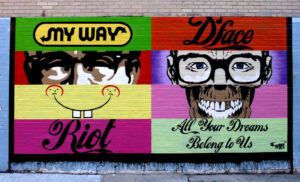
Hypothetically, we ran a foundation with a half million dollars and decided to give it to you with no restrictions. What would you do with the money?
That would be such a rad opportunity. I don’t know – I’d hire a plane to dump a load of paint on the Statue of Liberty – something nuts, something where people would say, “You can’t do that:†Well, I just did! Other than that, I would probably invest it into a gallery that is self-generated, which is what we’re trying to do with Stolen Space, It’s built upon friendship and trust. That’s the main part, is building friendships. It’s a community and that community is really important. But at the end of the day we have to rely on sales to keep it running, and it needs to have a staff to remain open. I would do something like that to help other artists coming through who share the same idea.
That’s similiar to our mission with FIND. . .
When you put yourself up in the street it gives you an opportunity to show your work to other people, but if you don’t have that, it’s really hard to get an opportunity to show your work to other people because the galleries aren’t always welcoming and open. A magazine gives a window — maybe someone will pick up that magazine, and be, “that’s the best stuff I’ve ever seen in my life! Who’s that artist?†Look it up, maybe buy a canvas, have a gallery see it, maybe do a show? Those are opportunities that take time for an artist. A magazine is a very pure way of doing it.
The underlying skeleton in your work appears as if “pop†is only skin deep. Is that how you perceive popular culture?
Death is a part of life. The line between life and death is really interesting. What’s really interesting is that it polarizes people. I really like the idea of celebrating the life of somebody when they’ve passed. Equally the birth of a child is the most amazing experience in the world. Death is an inescapable part of life and what people try and do to stop the onslaught of death by making themselves look younger, or trying to have a different perceived age, particularly in Hollywood and L.A., is really, really interesting. What are you afraid of? Are you afraid that you’re getting old? Well, everyone gets old. Are you trying to dissuade death? I think a lot of times people’s perception of what they should like is way out of whack from what it actually should be. And that’s part of the Hollywood thing I’m trying to get people to see. I’m not saying Hollywood, L.A. is a fucked up place – I absolutely love it. I’m just saying, don’t take it too seriously. Don’t get caught up too heavily in that idea of what you want. At the end of the day, we all have skeletons. What’s outside of it is what you are. We are being judged by our exterior gloss – what clothes we put on, our skin tone, and our face shape. We’re all going to rot back into the earth where we’ve come from. So yeah, It’s very basic. Plus, skulls look cool as fuck.
